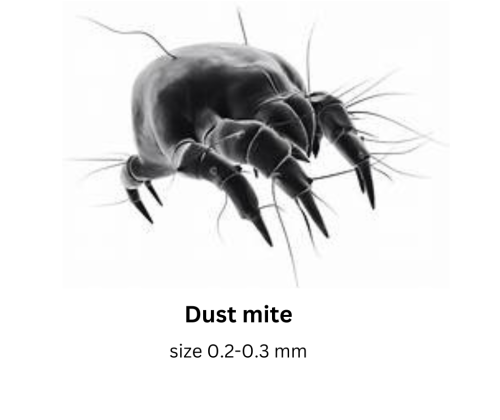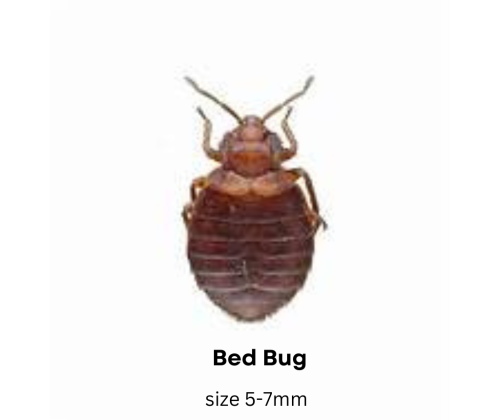When it comes to pests invading our beds, two common culprits come to mind: dust mites and bed bugs. Although both can cause discomfort and sleepless nights, they are very different creatures with unique habits, effects on humans, and methods of control. In this post, we’ll dive into the key differences between dust mites vs bed bugs, how they affect your health, and what you can do to keep them out of your home.
Dust Mites vs Bed Bugs: Key Differences
| Aspects | Dust Mites | Bed Bugs |
|---|---|---|
| Size | Microscopic (invisible to the naked eye) | Visible to the naked eye (about the size of an apple seed) |
| Feeding Habit | Feed on dead skin cells | Feed on human and animal blood |
| Bite or No Bite | Do not bite | Bite and leave red, itchy welts |
| Health Impact | Cause allergies and asthma symptoms | Cause red, itchy bites; may lead to secondary infections from scratching |
| Habitat | Live in warm, humid areas like mattresses, carpets, and furniture | Hide in cracks, crevices, and mattresses near sleeping areas |
| Signs of Infestation | Allergy symptoms (sneezing, coughing, itchy eyes) | Red bite marks, blood stains, dark spots on bedding, musty odor |
| Visibility | Invisible without magnification | Easily visible, especially after feeding |
| Movement | Stay in place (do not crawl or move actively) | Active crawlers, especially at night |
| Prevention | Wash bedding frequently, reduce humidity, vacuum regularly | Inspect second hand furniture, vacuum frequently, encase mattresses, be cautious while traveling |
| Lifespan | Live for around 1-2 months | Can live for up to 6-12 months without feeding |
| Treatment | Use allergen proof covers, reduce indoor humidity | Professional extermination often required |
What Are Dust Mites?

Dust mites are tiny, microscopic creatures that thrive in warm, humid environments, particularly in our bedding, carpets, and upholstered furniture. They belong to the arachnid family (just like spiders), but they are far too small to be seen with the naked eye. Dust mites don’t bite or feed on human blood. Instead, they live off dead skin cells that we naturally shed throughout the day.
The primary issue with dust mites is their ability to trigger allergies. Their waste products and body parts can become airborne and cause allergic reactions or worsen asthma symptoms in sensitive individuals.
Signs of a Dust Mite Infestation:
- Increased allergy symptoms like sneezing, coughing, or itchy eyes.
- Blocked nose
- Asthma flare ups
- Irritated skin due to prolonged exposure
What Are Bed Bugs?

Bed bugs, unlike dust mites, are visible to the naked eye. These small, reddish brown insects feed exclusively on human and animal blood. Bed bugs tend to be more active at night when they come out of hiding to feed on sleeping individuals. Their bites can cause red, itchy welts, and in some cases lead to secondary infections due to excessive scratching.
Bed bugs can hide in many places such as mattresses, bed frames, baseboards, and even in electrical outlets. They are notoriously difficult to get rid of and often require professional pest control services.
Signs of a Bed Bug Infestation:
- Small, red bites on the skin, typically in a line or cluster
- Blood stains on your sheets or mattress
- Dark brown or black spots (bed bug excrement) on bedding
- A musty odor in heavily infested areas
Summary
In the battle of dust mites vs bed bugs, both pests can cause discomfort, but they are vastly different in how they impact our health and homes. While dust mites are more likely to cause allergies, bed bugs are notorious for their bites and are harder to eliminate. Knowing the differences and taking preventive measures will help you keep both dust mites and bed bugs at bay, ensuring a better night’s sleep.
By understanding the distinctions between dust mites vs bed bugs, you can take the necessary steps to control and prevent infestations, keeping your home safe and comfortable for you and your family.